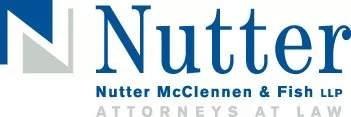To date, the Supreme Court has granted certiorari (commonly referred to as cert) to five patent-related cases this term, which will result in three oral arguments likely to be decided before the end of the term. Two of the cases were consolidated into a single argument, while another case was subject to a Grant-Vacate-and-Remand (GVR) order, meaning the previous decision by the United States Court of Appeals for the Federal Circuit (CAFC) has been vacated by the Supreme Court and the case must be reconsidered by the CAFC. There are also over 20 pending Petitions for Writ of Certiorari, which may result in additional patent matters being heard by the Court this term.
One case in which cert was granted is Cuozzo Speed Technologies, LLC v. Lee. The preceding CAFC decision demonstrated a show of support for various aspects of the inter partes review (IPR) rules. Cert was granted on January 15, 2016, and argument is scheduled for April 25, 2016. There are two issues to be decided by the Supreme Court. The first is whether construing claim terms of issued patents during an IPR proceeding according to their broadest reasonable interpretations is appropriate instead of using the plain and ordinary meaning of the claim terms. The second is whether it is appropriate for decisions by the Patent Trial and Appeal Board to institute an IPR proceeding to not be judicially reviewable. Developments related to this case can be tracked, and information and filings related to the same can be accessed, at SCOTUSblog.
Another case in which cert was granted is Samsung Electronics Co. v. Apple. The preceding CAFC decision found Apple liable for significant damages in view of design patents owned by Samsung. Cert was granted on March 21, 2016, to Question 2 presented by the petition. Argument has not yet been scheduled. Question two relates to how damages should be apportioned in instances in which an infringed patent applies to only a component of a product. The question asks if an award of infringer's profits should be limited to those profits attributable to the component. Developments related to this case can be tracked, and information and filings related to the same can be accessed, at SCOTUSblog.
Two other cases in which cert was granted are Stryker Corp. v. Zimmer, Inc. and Halo Electronics, Inc. v. Pulse Electronics, Inc. These two cases were consolidated by the Court into a single argument. The CAFC decision in Stryker reversed the district court's determination of willful infringement and vacated the trebled damages associated with the same. The decision also vacated and remanded the district court's finding of an exceptional case and its award of attorneys' fees. The CAFC decision in Halo Electronics also turned away a willful infringement argument, in this case affirming the district court's judgment of no willful infringement. Cert was granted on October 19, 2015, and argument was heard on February 23, 2016. Developments related to Stryker can be tracked, and information and filings related to the same can be accessed, at SCOTUSblog. Likewise, developments related to Halo Electronics can be tracked, and information and filings related to the same can be accessed, at SCOTUSblog.
The last patent-related case for which a petition was granted is Medtronic v. NuVasive. In this instance, no argument will be heard by the Supreme Court because the Court issued the aforementioned GVR order. The GVR order granting cert indicated the CAFC should reconsider its decision in view of the holding in Commil USA, LLC v. Cisco Systems, Inc. In Commil, the Supreme Court held that a good faith belief in the invalidity of a patent is not a shield to liability for active inducement of infringement, and further, indicates that inducement requires proof that the accused inducer knew that the actions being induced constituted patent infringement. This blog previously discussed the Commil case shortly after it was decided.
Stay tuned to the IP Law Bulletin blog for future updates on these cases and other patent and IP developments at the Supreme Court.
This update is for information purposes only and should not be construed as legal advice on any specific facts or circumstances. Under the rules of the Supreme Judicial Court of Massachusetts, this material may be considered as advertising.


